Difference between revisions of "Weymouth"
From Our Contribution
(→Soldiers who passed this way) |
(→Soldiers who passed this way) |
||
| Line 113: | Line 113: | ||
* [[Lancel Butcher]] 4 Apr - 23 Jul 1918 - No. 4 Command Depot | * [[Lancel Butcher]] 4 Apr - 23 Jul 1918 - No. 4 Command Depot | ||
* [[Aubrey Cecil Dawson]] 29 Apr - 19 Aug 1918 | * [[Aubrey Cecil Dawson]] 29 Apr - 19 Aug 1918 | ||
| + | * [[George Joseph Harris]] 14 May - 24 Oct 1918 | ||
* [[John Thomas Buckland]] 27 May - 19 Aug 1918 | * [[John Thomas Buckland]] 27 May - 19 Aug 1918 | ||
* [[Alan Harry Boyce]] 2 - 30 Jul 1918 | * [[Alan Harry Boyce]] 2 - 30 Jul 1918 | ||
Revision as of 19:49, 29 August 2021
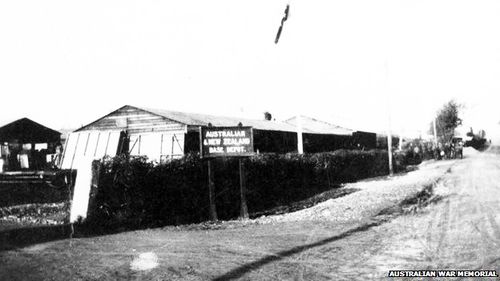 Monte Video Camp - shared with New Zealand | |
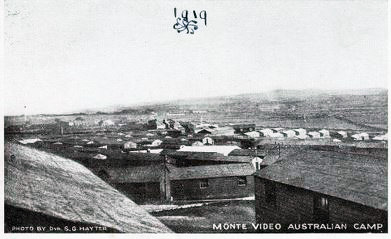 Post New Zealand use | |
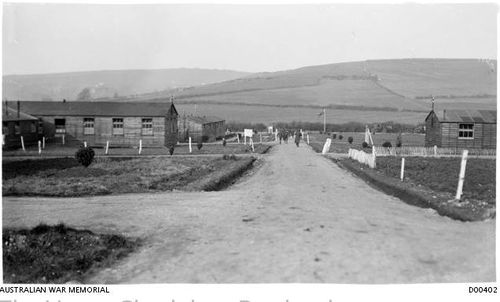 Littlemoor Camp | |
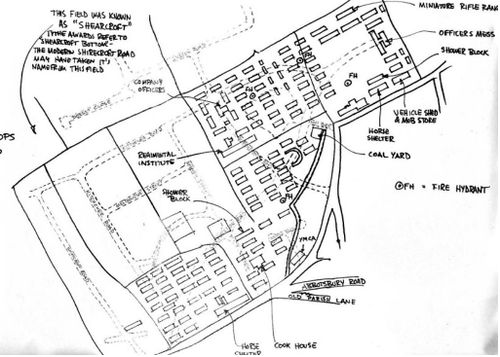 Plan of Westham camp | |
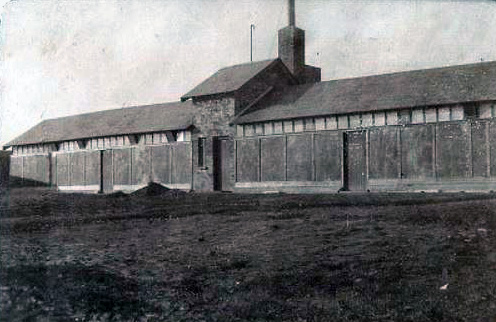 Monte Video bath house | |
Remarks
On the outbreak of war Weymouth was a popular seaside resort made fashionable as a watering-place by King George the Third. It also had military connections with the nearby naval base of Portland and several army camps & forts from the Napoleonic period. Following the landing of Australian & New Zealand troops, the Anzacs, at Gallipoli on 25th April 1915, casualties mounted rapidly and were initially transported to their base in Egypt, which was soon unable to cope, with wounded being sent on to England.
Here the troops found that there was no Australian base to which they could report once they had been discharged from hospital; what was needed urgently was a base in England where troops could be sent to convalesce. So on 31st May 1915 a command depot was set up at Monte Video House in Chickerell, some two miles from Weymouth.
The depot was the joint Australian and New Zealand depot until the NZ depot opened at Hornchurch in Essex in April 1916.
Unfortunately, not all men could be restored to fighting fitness and 600 had been invalided home as unfit for further service. From this time those troops who were likely to remain unfit were sent to another camp which had been opened at Westham, then on the outskirts of Weymouth (see map on right courtesy of Weymouth Library & drawn by Andrew Bryant, where present day roads are shown dotted).
After April 1916, Weymouth became the Australian Imperial Forces (AIF) Command Depot No.2 which accommodated those men not expected to be fit for duty within six months, therefore, most of the Diggers repatriated as a result of wounds or sickness passed through Weymouth. During the years 1915-1919 over 120,000 Australian and New Zealand troops passed through Weymouth.
While the general training in the new unit concentrated on toughening-up, the individual training a soldier received was governed by medical inspections under which he was categorized weekly according to fitness.
As casualties mounted further on the Western Front, it became necessary to open a third camp at Littlemoor on a greenfield site to the north east of Weymouth. This was probably the prettiest camp with views of the Bincombe hills, well known for its flower beds and vegetable gardens tended by the Anzacs.
Soldiers who passed this way
All postings were to the No. 2 Command Depot unless otherwise noted.
Unit Personnel
- Charles Edward Parkin 12 Apr 1917 - 12 Jun 1919
- Henry Thomas (Harry) Brear 28 Sep 1917 - 16 Jun 1918
- Henry Richard Keefe ?? Jan - 13 May 1918
Passing Through
1916
- Cyril Foxwell 24 Feb - 27 Jul 1916
- Ernest Ball DCM 29 Feb - 13 Jul 1916
- Arthur Charles Cam 20 - 23 Jun 1916
- Leonard Henry (Lennie) Buckingham MM ? - 5 Jul 1916
- John Paterson Henderson 8 Oct - 12 Nov 1916
- Victor Emanuel Durling 23 Oct - 17 Nov 1916
- Percy Goodall 23 Oct 1916 - 12 Feb 1917
- Alexander Russell Main 25 Nov 1916 - 12 Feb 1917
- Patrick Michael 25 Nov - 1 Dec 1916
- Henry Thomas Cockram 28 Nov 1916 - 12 Feb 1917
- John Hall 8 Dec 1916 - ?? Jan 1917
1917
- Patrick Wilford Kelly 4 - 13 Jan 1917
- † Reginald Peter Lewis 8 Jan 1917 - 15 Feb 1917
- Albert George Bullock 13 Feb - 16 Mar 1917
- William James Allen 2 Mar - 8 May 1917
- James Candish 3 Mar - 3 Jul 1917
- Patrick Michael 5 - 7 Mar 1917
- Frank Moore 14 Mar - 27 Apr 1917
- Thomas Henry Rice 15 Mar - 7 Apr 1917
- Richard Beattie 10 Apr - 22 May 1917
- Aubrey Cecil Dawson 10 Apr - 8 May 1917
- James Henry Davidson 14 Apr - 3 May 1917
- Walter David Francis Kerridge 14 Apr - 19 Jun 1917
- William Lamplough Ullyott 15 Apr - 28 Jun 1917
- Patrick Wilford Kelly 16 Apr - 3 May 1917
- Joseph Pulford Apr 1917
- Henry Giles Schmidt Apr 1917
- Patrick Michael 1 May - 20 Jul 1917
- William Heath 12 May - 10 Sep 1917
- Edwin Patrick Hanrahan 1 Jun - 20 Jul 1917
- John Harold Coffen 25 Jun - 27 Aug 1917
- Victor Emanuel Durling 2 Jul 1917 - 4 Feb 1918
- George Henry Aspinall 4 Jul - 9 Sep 1917
- Leonard Henry (Lennie) Buckingham MM 6 Jul 1917 - 9 Mar 1918
- William Arthur Green 31 Jul - 27 Aug 1917
- Donald Gordon Melville Huggins 9 - 27 Aug 1917
- Alexander Donald 10 Aug - 9 Sep 1917
- Thomas Kinsman Bickell 14 - 24 Aug 1917
- James Lawrence McKenna 11 Sep - 27 Nov 1917
- Edward Dudley Mann 12 Sep - 26 Oct 1917
- Archibald Shepherd 16 - 22 Sep 1917
- Gustaf Adolf Olson 24 Sep 1917 - 18 Jan 1918
- Henry Thomas (Harry) Brear 28 Sep 1917 - 16 Jun 1918
- Alfred Gittins 2 - 9 Oct 1917
- Arnold Thorp 21 Oct - 11 Dec 1917
- William Thomson 22 Oct - 9 Nov 1917
- Samuel Vivian Mortimer 8 Nov - 19 Dec 1917
- † David Andrew Allison 23 Nov - 14 Dec 1917
- Albert William Barratt 13 Dec 1917 - 14 Feb 1918
- Thomas Brown Mack 19 Dec - 14 Feb 1918
- Henry Richard Keefe 21 Dec 1917 - 31 May 1918
- Charles Fancote 22 Dec 1917 - 31 Jan 1918
1918
- Sidney Hart ?? Jan 1918 - 27 Jan 1919
- William James Barnard 7 - 30 Jan 1918
- Frank Moore 10 Jan - 9 Mar 1918
- Thomas Henry William Denny 14 Feb - 11 Mar 1918
- Thomas Edward Raine Apr - Jun 1918
- Henry Albert Thorp 3 Apr - 16 Jun 1918
- Lancel Butcher 4 Apr - 23 Jul 1918 - No. 4 Command Depot
- Aubrey Cecil Dawson 29 Apr - 19 Aug 1918
- George Joseph Harris 14 May - 24 Oct 1918
- John Thomas Buckland 27 May - 19 Aug 1918
- Alan Harry Boyce 2 - 30 Jul 1918
- Matthew Walsh 18 Jul - 22 Sep 1918
- William George Martin 20 Jul - 18 Oct 1918
- John Paterson Henderson 10 - 15 Sep 1918
- Ralph Trotter 3 Sep - 11 Dec 1918
- George Emanuel Nettleton 17 Sep - 5 Nov 1918
- Ernest Ball DCM 27 Sep - 6 Nov 1918
- William Wright Casterton MM 3 Oct - 11 Dec 1918
- Gordon Edgar (George) Bennett 11 Oct - 11 Dec 1918
- Daniel Adkins Lewis 24 Oct - 9 Dec 1918
- Francis William Swann 20 Nov - 8 Dec 1918
- Norman Sedrick Tonkin 25 Nov 1918 - 20 Jun 1919
- David Forbes Abernethy Dec 1918
- Charles Fielder 1 Dec 1918 - 3 Jan 1919
1919
- Stuart Alan Webb 22 Jan - 3 Aug 1919
- Harry Redcliffe Broadhurst 30 Jan - 27 Feb 1919
- Richard Evans MM 11 Feb - 2 May 1919
- James Thomson MM 15 Mar - 30 Apr 1919